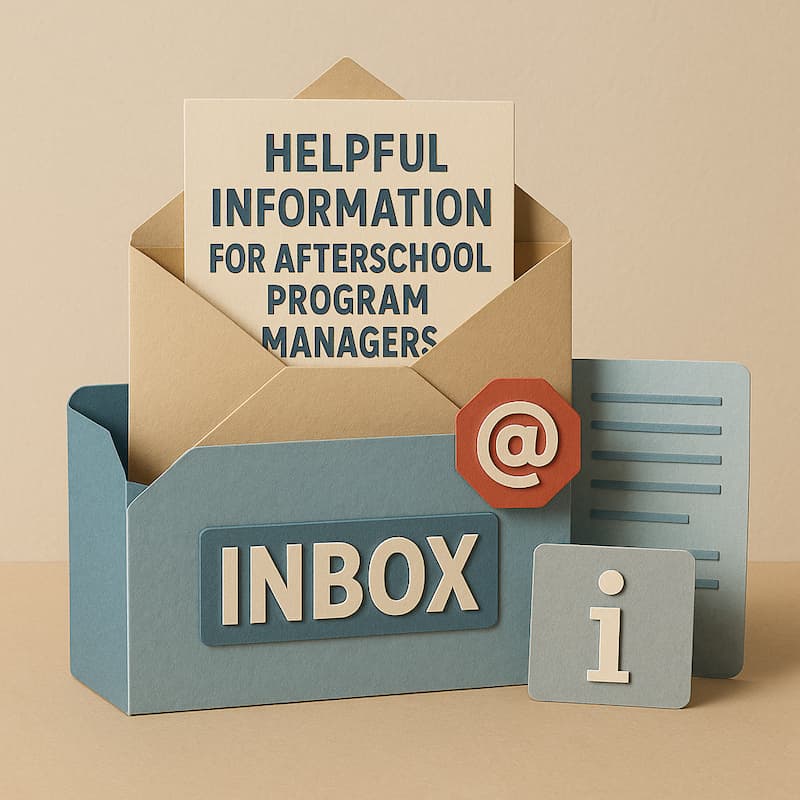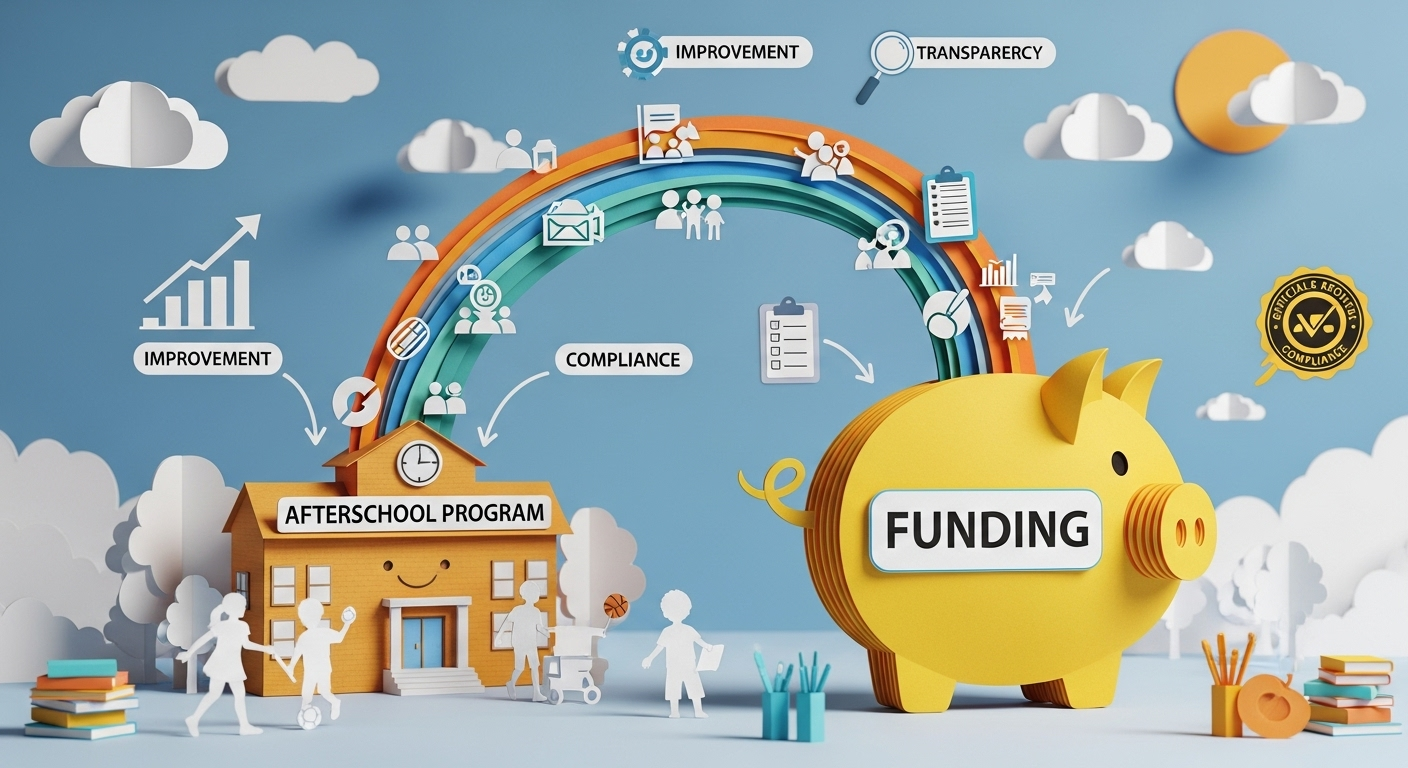The Comprehensive CALPADS Guide for California Afterschool Programs
The California Longitudinal Pupil Achievement Data System, or CALPADS, is a vital component of California’s K-12 education framework. For administrators and staff involved in afterschool and expanded learning programs, a clear understanding of CALPADS is important for maintaining external funding and for internal feedback. This system directly impacts compliance with state and federal regulations, influences crucial funding streams, and offers valuable opportunities to enhance program quality. Grasping the fundamentals of CALPADS allows afterschool programs to meet their obligations effectively and demonstrate their significant contributions to student success. This guide aims to demystify CALPADS, offering practical insights for afterschool program leaders to navigate its complexities and leverage its potential.
Understanding CALPADS Fundamentals for Program Success
CALPADS serves as California’s official K-12 longitudinal data system, maintaining individual student data across various domains, including demographics, course information, and, critically for us, program participation. Its main purpose is to meet state and federal reporting requirements, especially under the Every Student Succeeds Act (ESSA). This means all Local Educational Agencies (LEAs) must participate. CALPADS moved California from aggregate data collection to a more detailed, student-level approach, enhancing the ability to track student progress and ensure accountability.
Beyond compliance, CALPADS data supports program evaluation and provides LEAs with longitudinal insights into their student populations, which can be invaluable for afterschool programs seeking to identify students who could benefit most from their services. While comprehensive, this system does mean significant data management responsibilities. The California Department of Education (CDE) offers extensive resources to help. Key documents (available at CDE website) include the CALPADS File Specifications (CFS), outlining data formats, the CALPADS Data Guide, explaining data usage, and CALPADS Code Sets. Staying informed through CDE updates and CSIS (California School Information Services) training is also important, as these resources are regularly updated. Efficient data management systems can simplify how programs interact with these requirements.
Key CALPADS Reporting Items for Your Program
For afterschool programs, knowing what specific data to report to CALPADS is the foundation of compliance. The accuracy of this student demographic (SINF) and enrollment (SENR) data, usually managed in the district’s Student Information System (SIS), like Aeries, is the bedrock that supports it. Errors here will complicate program-specific reporting, as all data is tied to a student’s unique Statewide Student Identifier (SSID).
The Student Program (SPRG) file is central for afterschool program involvement. It uses an “Education Program Code” to identify specific programs like ELOP, ASES, or 21st CCLC. Always consult the latest official CALPADS Code Sets from the CDE for current codes. The SPRG file also requires “Program Membership Start Date” and “Program Membership End Date,” necessitating careful tracking of when students enroll in and leave programs.
While daily afterschool attendance records aren’t submitted as a separate CALPADS file, this data is extremely important. It’s essential for ELOP funding calculations and meeting ASES/21st CCLC reporting mandates. This attendance data informs the aggregated program participation reported in the SPRG file. Reliable digital attendance tracking is highly recommended. Information regarding staff, particularly for qualifications and staff-to-student ratios (e.g., ELOP’s 1:10 for TK/K), is also vital for compliance. While direct CALPADS reporting of afterschool staff may be managed at the LEA level, programs must maintain accurate records.
Harmonizing Program Data with Student Information Systems
In California school districts, the Student Information System (SIS), such as Aeries, is the primary source of student data. CALPADS reporting is intrinsically linked to the SIS. Therefore, a smooth integration between any afterschool program management system and the district’s SIS is not just a convenience but a critical element for accurate CALPADS compliance.
Automatic data synchronization is a key feature of effective integration. It automates the flow of essential student information like contact details and grade levels from the SIS to the afterschool platform. This significantly cuts down on redundant manual data entry, a common source of errors. By pulling foundational student data from the SIS, afterschool systems ensure higher data accuracy, which is vital for reporting. This automation saves administrative time, freeing up staff to focus on program quality. For ELOP compliance, consistent and accurate student attendance and participation data are critical, and reliable synchronization helps maintain this.
The integration process usually starts with an initial data sync from the SIS. Then, the regular and real-time flow of data keeps th things current. This ensures consistency between the afterschool program’s data and official student records in the SIS. The afterschool management system helps ensure the source data is clean and correct, making the subsequent SIS-to-CALPADS reporting process much more efficient and reliable.
The Real Value of CALPADS Data for Afterschool Initiatives
Meticulous CALPADS reporting is directly tied to the operational health and funding of afterschool programs. For initiatives like ELOP, ASES, and 21st CCLC, financial support often hinges on data submitted through CALPADS. ELOP funding, for instance, is calculated using prior year’s average daily attendance (ADA) and unduplicated pupil percentage (UPP) derived from CALPADS. Therefore, accurate attendance tracking within your afterschool program is crucial for securing appropriate funding.
CALPADS is also the official system for LEAs to demonstrate compliance with state and federal regulations governing expanded learning programs. Meeting these mandates is essential for continued eligibility for program funding. Beyond these requirements, CALPADS data, when analyzed thoughtfully, can offer profound insights for program evaluation and improvement. Attendance reports can help gauge program success and inform adjustments to offerings, allowing programs to be proactive in enhancing their services.
Data submitted via CALPADS also contributes to broader public accountability metrics, such as the California School Dashboard, reflecting an LEA’s commitment to comprehensive educational opportunities. As state investment in expanded learning grows, the importance of this data in the overall picture of student achievement and district accountability also increases. Furthermore, accurate data ensures students receive the services they are eligible for, supporting equitable access to afterschool offerings.
Navigating Annual CALPADS Deadlines and Cycles
Effective CALPADS reporting for afterschool programs is a year-round commitment, not just a seasonal task. While the End-of-Year (EOY) 2 submission is the main window for reporting program participation, its accuracy relies on consistent data management throughout the academic year and any summer sessions. The starting point is always precise student demographic and enrollment data in the district’s SIS.
Daily attendance tracking in afterschool programs is non-negotiable. This information is critical for ELOP funding and ASES/21st CCLC compliance. Digital systems can capture this efficiently. Key periods throughout the year demand attention. At the beginning of the year or during enrollment periods, accurately recording student registration and program start dates is essential. Before the Fall 1 Census Day (usually early October), LEAs must ensure all foundational student data, including program eligibility information like Free or Reduced-Price Meal status (which impacts ELOP funding), is current in the SIS and CALPADS.
The EOY submission window, typically May through August, is when afterschool program participation is formally reported. Specifically, EOY 2 is when LEAs submit Student Program (SPRG) records for ELOP, ASES, and 21st CCLC participation. Reviewing CALPADS validation reports during this window to correct errors before final certification is vital. Regular internal data checks throughout the year can prevent a last-minute rush. Remember to include data from summer programs in subsequent EOY submissions. Staying updated on CDE communications regarding any changes to timelines or requirements is also a continuous responsibility. See our article on CALPADS timelines for more specific and current dates.
Streamlining Your CALPADS Workflow Effective Data Management Strategies
Managing CALPADS data can be made much simpler with effective strategies and the right tools. A primary goal should be to digitize data collection as much as possible. Online registration systems allow parents to input information directly, promoting accuracy from the start. Systems offering real-time check-in and check-out help ensure accurate records vital for funding and compliance. Centralizing your program data using an integrated platform for registration, attendance, and communication prevents data silos and simplifies reporting. When data is in one place, generating reports for CALPADS or syncing from your district’s SIS becomes far easier.
Regular data validation should be a routine practice. Modern afterschool management software often includes reporting tools that allow for regular checks on data completeness and accuracy. Catching errors early prevents them from becoming larger issues. Staff training on proper data entry and the importance of data quality is also key. When everyone understands their role, the overall data integrity improves. Finally, ensure any system used provides strong data security to protect sensitive student information, adhering to regulations like FERPA and COPPA.
Empowered by Data Moving Forward with CALPADS Confidence
While the California Longitudinal Pupil Achievement Data System can initially appear complex, a clear understanding of its purpose, reporting needs, and timelines can transform it into a powerful asset for afterschool programs. It ensures our programs receive the financial backing necessary to provide high-quality experiences for students. Furthermore, CALPADS is the system through which we demonstrate compliance and accountability.
By adopting digital tools for registration, attendance tracking, and overall program administration, we can significantly ease the administrative load, boost data accuracy, and ensure we meet critical deadlines. Seamless integration with district Student Information Systems like Aeries further refines this process, ensuring a consistent and reliable data flow. As CALPADS continues to evolve, particularly with the deeper integration of ELOP data, proactive planning of an implementation roadmap, and adaptable management systems will be crucial.
Ultimately, well-managed CALPADS data empowers our afterschool programs. It enables us to clearly show our impact, make data-driven decisions for continuous improvement, and effectively advocate for the resources our students deserve. By approaching CALPADS with knowledge, effective strategies, and the support of modern tools, we can move forward with confidence, using this data not just for compliance but as a strategic tool to enhance student success and program excellence.








